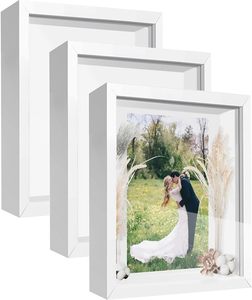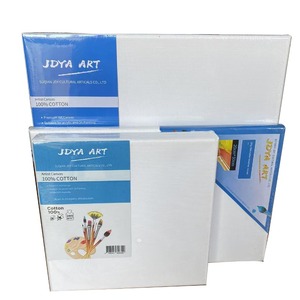
All categories
Featured selections
Trade Assurance
Buyer Central
Help Center
Get the app
Become a supplier

(291429 products available)




















































material for frames have become an essential element in enhancing the aesthetic appeal of interior spaces. They encompass a wide range of designs and materials that cater to diverse tastes and preferences. Whether used to encase paintings, photographs, or mirrors, material for frames serve as a crucial component in home decor, adding depth and personality to any room. Their versatility allows them to be incorporated into various styles, from classic to contemporary, making them a popular choice for individuals looking to refine their living spaces. As the demand for unique and personalized home decor grows, the role of material for frames in transforming environments continues to expand.
The variety of material for frames available is vast, offering options to suit different decor styles and functional needs. Common types include wooden, metal, and composite mouldings. Wooden mouldings are favored for their natural beauty and warmth, with options such as oak, pine, and mahogany providing distinct textures and finishes. Metal mouldings, often crafted from aluminum or steel, offer a sleek and modern aesthetic, ideal for contemporary settings. Composite mouldings, made from engineered materials, provide durability and versatility, often mimicking the appearance of wood or metal. Each type of material for frames is designed to complement specific artistic pieces and interior themes, ensuring a harmonious integration into any space.
material for frames play a multifaceted role in home decor, offering both protective and decorative benefits. They serve to safeguard artwork and photographs from damage, providing structural support and shielding against environmental factors like dust and moisture. Features such as ornate carvings, minimalist lines, or intricate patterns enhance the visual appeal of the frames, allowing them to stand out or blend seamlessly with the surrounding decor. Additionally, the choice of finish—whether matte, glossy, or textured—can significantly impact the overall look and feel of the framed piece. The adaptability of material for frames makes them suitable for various settings, from formal living rooms to casual family spaces.
The construction of material for frames involves a selection of materials that determine their durability, appearance, and cost-effectiveness. Wood remains a traditional favorite, prized for its natural grain and versatility in finishes. Metals like aluminum and steel are chosen for their strength and modern appeal, often featuring powder-coated or anodized surfaces for added resilience. Composite materials, including MDF and polystyrene, offer cost-effective alternatives that mimic the look of more expensive materials. In addition to the core materials, finishes and treatments such as varnishes, paints, and sealants are applied to enhance the longevity and aesthetic of material for frames. These choices impact not only the visual outcome but also the maintenance requirements of the mouldings.
Effectively incorporating material for frames into home decor requires thoughtful consideration of style, proportion, and placement. Begin by selecting mouldings that complement the artwork or photograph, taking into account the scale and color palette of the piece. Ensure that the moulding style aligns with the overall decor theme, whether it be traditional, rustic, or modern. When installing, consider the height and lighting of the room to maximize the visual impact of the framed piece. Proper maintenance of material for frames involves regular cleaning and inspection to preserve their condition and aesthetic appeal. By thoughtfully integrating mouldings into the decor, one can elevate the ambiance and character of their living spaces.
Selecting the ideal material for frames for your home decor involves a careful assessment of various factors. Firstly, consider the style and theme of the room where the moulding will be placed. Whether your decor is vintage, minimalist, or eclectic, the moulding should enhance the existing aesthetic rather than clash with it. Next, focus on the material that best suits your needs. For instance, wooden mouldings offer warmth and traditional appeal, while metal options can provide a sleek, modern look. The size and proportion of the material for frames relative to the artwork or mirror it encases are also crucial, as they can affect visual balance and harmony. Additionally, think about the color and finish, whether it be matte, glossy, or metallic, to ensure it complements the overall color palette of the room.
The choice of material in material for frames is pivotal for both aesthetic and functional reasons. Different materials bring unique textures and finishes, influencing the overall appearance of the framed piece. Wooden mouldings are known for their versatility and timeless appeal, while metal mouldings offer durability and a modern touch. Composite materials provide cost-effective solutions and mimic the look of wood or metal, making them suitable for various styles and budgets. The material also affects the maintenance requirements and longevity of the moulding, which is essential for preserving the integrity of the artwork or photograph it frames.
Yes, material for frames can be customized to align with specific decor styles and preferences. Customization options may include unique finishes, colors, carvings, and dimensions tailored to the individual's taste and the room's aesthetic. This allows for a personalized touch that enhances the decor and creates a cohesive look. Whether it's a bespoke design or a modification of existing mouldings, customization ensures that the moulding fits seamlessly into the intended space, reflecting the owner's personality and style.
The finish of material for frames significantly impacts their visual appeal and how they interact with the surrounding decor. A matte finish can provide a subtle, understated look, ideal for minimalist spaces, while a glossy finish adds shine and sophistication, perfect for contemporary settings. Textured finishes can introduce depth and interest, complementing rustic or industrial themes. The choice of finish can also affect light reflection and how the moulding frames the artwork or photograph, influencing the overall ambiance of the room.
Maintaining material for frames involves regular cleaning and inspection to ensure their longevity and aesthetic appeal. Dust accumulation can be prevented by gently wiping the mouldings with a soft cloth, whilst avoiding abrasive cleaners that may damage the finish. For wooden mouldings, occasional polishing can enhance their natural grain and preserve their beauty. Metal mouldings may require specific treatments to prevent tarnishing or corrosion. Regular inspection helps identify any signs of wear or damage, allowing for timely repairs to maintain the integrity of the mouldings.
Integrating material for frames into a room requires careful design considerations to achieve a harmonious look. The size and scale of the moulding should be proportionate to the wall and the framed piece to avoid overwhelming the space. Placement is crucial; for example, positioning mouldings at eye level ensures that they draw attention and enhance the visual focus. Consider the room's lighting, as it can affect how the moulding is perceived; strategic lighting can highlight its features and create a desired ambiance. Finally, the moulding should complement the room's color scheme and decor style, contributing to a cohesive and inviting environment.